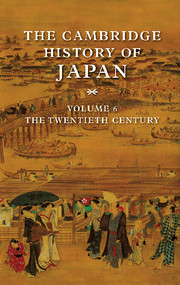Book contents
8 - Industrialization and technological change, 1885–1920
from PART III - ECONOMIC DEVELOPMENT
Published online by Cambridge University Press: 28 March 2008
Summary
ECONOMIC GROWTH, 1885–1920
The stabilization of the economy following the Matsukata deflation of the early 1880s marks the end of a transitional period in Japan's economic development and the beginning of the initial phase of modern economic growth that continued to the end of World War I. By the mid-1880s the costs of the Restoration and its aftermath had largely been met, and a start had been made on building an economic infrastructure. Although economic activity and life-styles were still scarcely touched by modern technology and organization, the seeds of a modern economic sector in industry, trade, and finance, on which Japan's future was to depend, were being sown.
It is from the 1880s that a reasonably reliable and comprehensive set of quantitative estimates (the LTES series) is available. Prepared in the 1960s and subsequently adjusted in some details, these estimates have provided the material for some sophisticated analyses of Japan's experience. The importance of quantitative data for the description and understanding of economic growth scarcely needs emphasizing. There are, however, caveats regarding these estimates. Although based on the consideration and evaluation of all available data, these estimates have been made into a consistent system by reference to an overall model that makes assumptions about the relationships of the various individual series to one another. Gaps in the data for the period before the late 1880s, moreover, can be filled only on the basis of some preconceptions about the speed and direction of growth.
- Type
- Chapter
- Information
- The Cambridge History of Japan , pp. 383 - 450Publisher: Cambridge University PressPrint publication year: 1989



